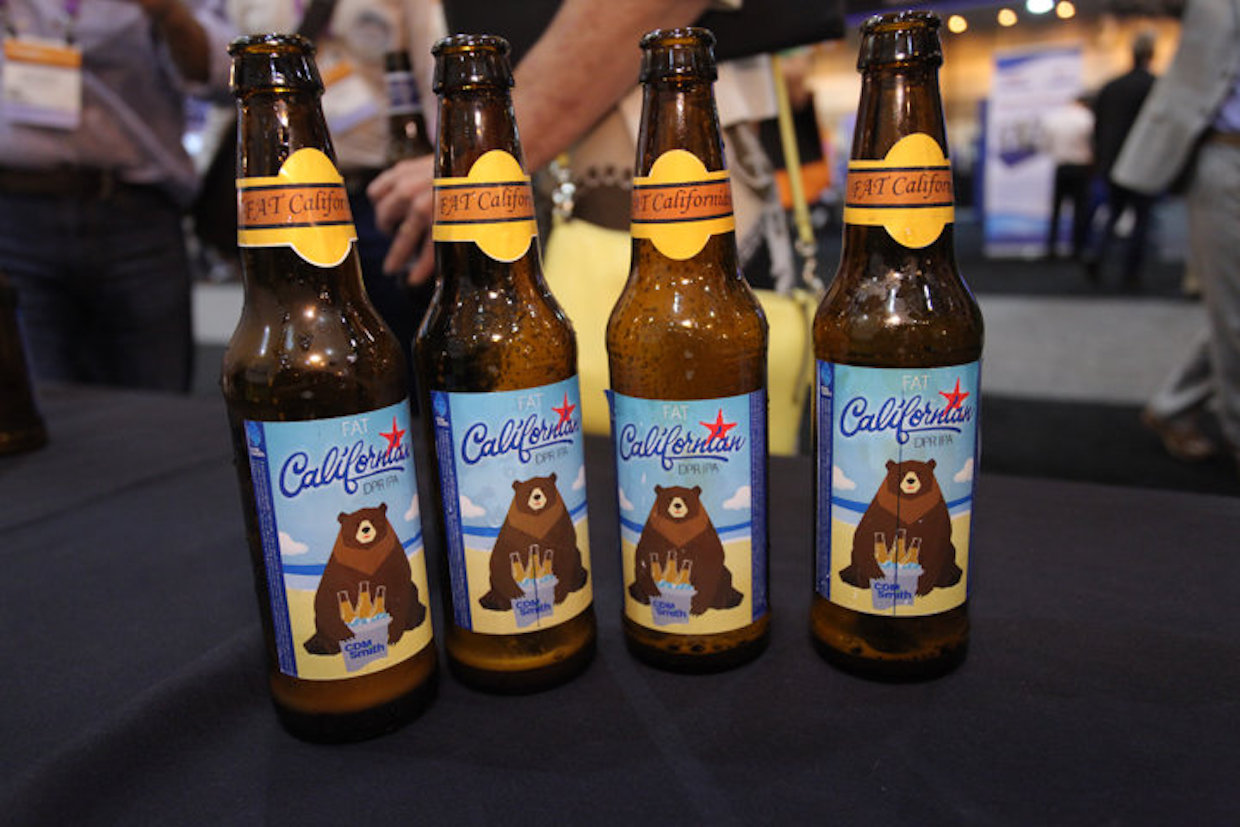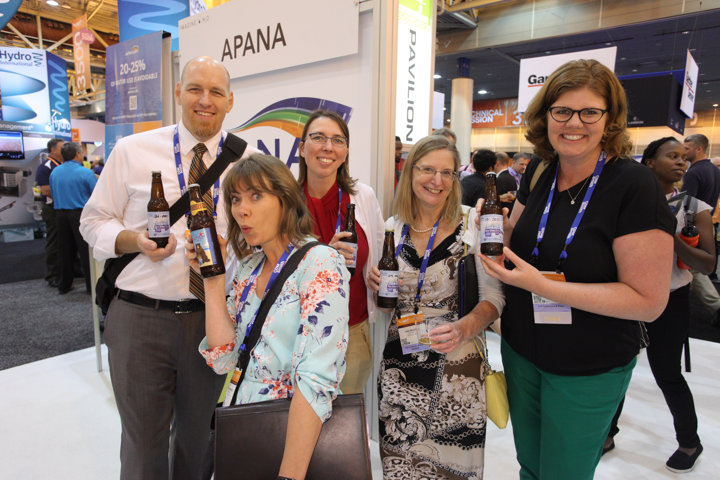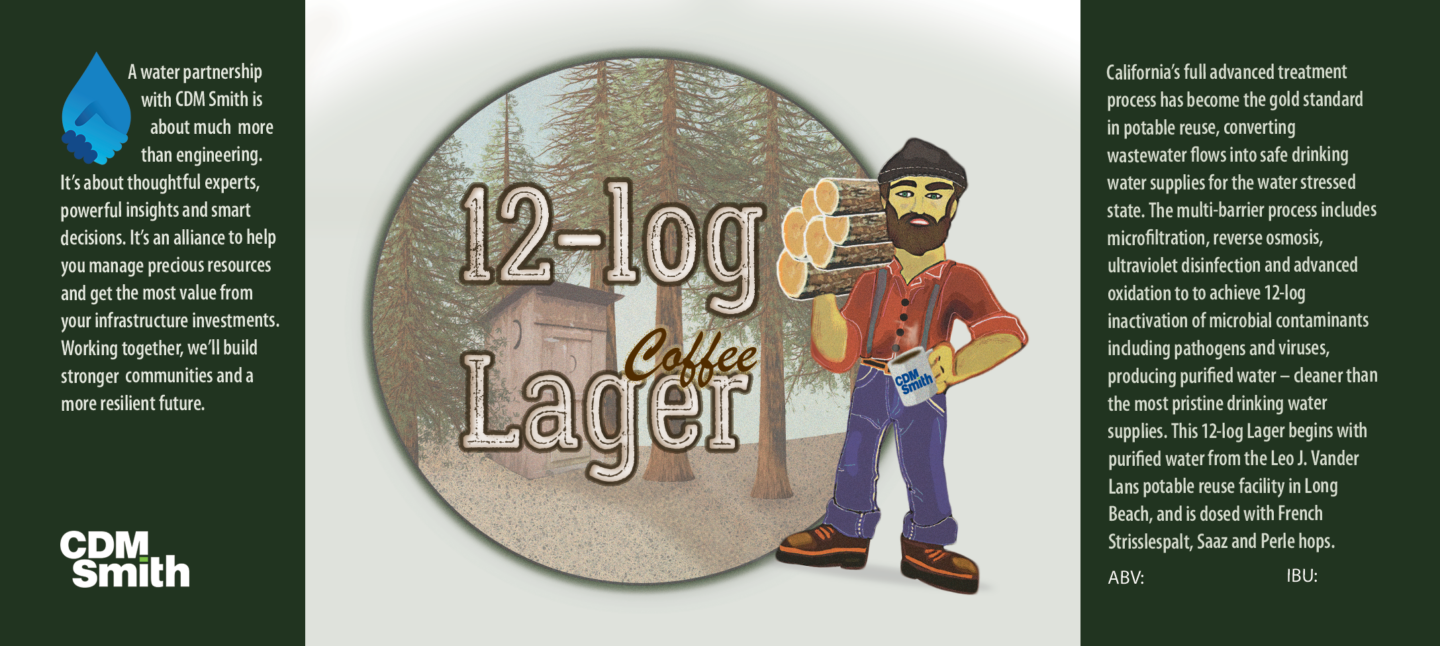Brewing Sustainably With Recycled Water
Here’s the story of how a few crafty engineers and a Denver brewery spread the word about water sustainability through the ultimate conversation starter: beer.

We know that water is absolutely essential in day-to-day life. As humans, we consume it, cook with it, bathe in it, water our plants with it, etc. But with growing populations, climate change, and the scarcity of this resource becoming more apparent every day, diversifying ways to attain clean water is on the horizon in, what should be, plain sight.
Here’s the story of how a few crafty engineers and a generous Denver brewery spread the word about water sustainability through the ultimate conversation starter: beer.
The Background of Water Reuse
If “water reuse” is new to your vocabulary, you’re not alone. It’s another way to say water recycling, and it’s the process of taking used water—wastewater, stormwater, greywater, or saltwater—and purifying it so it can be used again. Yes, for drinking, showering, irrigating, industrial purposes, watershed restoration, etc.
Why Water Reuse?
Communities around the US aren’t just practicing water reuse because they can. Frankly, we’re actively running out of clean water on this planet, and it’s increasingly important to determine other methods by which we can get our hands on it. With 33% of people on Earth without access to clean water, and a projected population of 9.7 billion by 2050, the number of people without safe water is only expected to grow. Plus, environmentalists anticipate climate change to make floods and droughts more severe, which makes some communities increasingly vulnerable.
And while consumer knowledge isn’t widespread, water reuse efforts are. According to a survey by Bluefield Research, in 5 years, recycled water in this country is projected to increase 37%, from 4.8 billion gallons per day to 6.6 billion per day. Looking forward, our nation’s water infrastructure “must address both water supply and water quality challenges,” whereas it’s previously focused solely on ensuring access to clean water and safely disposing wastewater.
Water Reuse Hurdles
Of course, with self-driving cars and package deliveries via drone, it’s no surprise that our tech savvy world has come up with the necessary purification process to accomplish water recycling. The main problem is much harder to tackle: humans.
There are 2 misconceptions about this initiative:
- People believe Earth has an endless supply of clean water.
- People are grossed out by the idea of consuming or bathing in water that’s been used before.
And no shame if you fall into one or both of these categories—I initially did, too. There’s an understandable emotional and psychological response humans have to the idea of water reuse, and it can only be remedied by education.
And, maybe by an ice cold beer.

Brewing With Reuse Water
There had been rumblings for a few years about environmental enthusiasts gathering at large conferences across the US to sample beer made with reuse water. Because water is so essential to beer—it makes up 90% of beer’s content—the beverage was being used as a vehicle to encourage sampling.
This is where our story comes in!
Meet Jill & Tim
Jill and Tim are environmental engineers at CDM Smith, a firm finding smart solutions in water, environment, transportation, energy, and facilities. Specifically, Jill and Tim’s focus is on drinking water.
Jill began her work in water reuse in a graduate program at Colorado State University. There she worked on a greywater project—that is, capturing shower water from a dormitory on campus, treating it, and using it for toilet flushing in the same building.
Tim has been an environmental engineer at CDM for 20 years now, where both he and Jill specialize in finding impaired sources of drinking water and making better use out of them. Tim’s past in a Denver rock and roll band, in addition to his home brewing hobby, is how these 2 engineers came in contact with Jason zumBrunnen from Ratio Beerworks.
Getting The Goods
Jason is the Founder and Brewmaster at Ratio, a local downtown favorite in the Mile High City. When Tim reached out about using their pilot system, Jason, with a chemical engineering background and general love for science himself, was gracious enough to oblige. (Initially, Ratio had the pilot system to test small beer batches, but the brewery was doing so well that new ideas were being brewed at full scale on their 20 barrel system.) Jill and Tim had the equipment, now they just needed the water!
In Southern California, there’s a recycled water facility called Leo J. Vander Lans Advanced Water Treatment Facility (LVLAWTF). Upon receiving treated wastewater, they further purify it and then inject it into an aquifer where it’s eventually pumped out to a drinking water treatment plant and served to customers. This water was by all accounts considered exceptionally high quality, but due to the regulatory landscape at the time, it wasn’t considered drinking water. Jill and Tim intercepted the advanced treated water before it got recharged into the region’s groundwater, and got it shipped to Colorado instead.
Let The Brewing Begin!
For 2-3 years, Jill and Tim experimented with brewing using reuse water. Ratio lent hands, quality control tips, and free beers to fuel the engineering team. Eventually, two punny and mouth watering brews were born!
FAT Californian was the first reuse water brew bottled at Ratio. FAT is an acronym for Full Advanced Treatment which is what they call the series of unit processes that make reuse water clean for drinking.
The second brew was the 12-log Lager. “12-log” is how they quantify how many pathogens were removed from the water (over 99.9999%), therefore informing how clean the water actually is.
Both Jill and Tim, along with other taste testers, agreed: This beer was good. The engineers credit the great taste to the high quality of water they used. Because there were no minerals in the water at all, the beer had “an open canopy to work with.” That means the other ingredients added could wholly shine through since the water itself was void of anything.
But you won’t find FAT Californian nor 12-log Lager on tap at Ratio because of the regulations surrounding reuse water. The team couldn’t sell the bottles—they could only give them out for free, and send them to conferences similar to the ones that spurred this project from Jill and Tim.

The Aftermath
So why spend 2+ years on this project, only to send the brews as samples to conferences? It all goes back to changing the minds of us stubborn consumers!
Pure Water Brewing Alliance
This conference-attending, sampler-slinging group has a name: The Pure Water Brewing Alliance. This group of utilities, brewers, engineering firms, and tech companies held their first Pure Water Brew competition in 2014, hosted by Clean Water Services and Oregon Brew Crew. Competitions for the best brew with 100% recycled water spread nationally after that, and the Alliance officially formed in 2017.
Now, the Alliance meets at the annual Craft Brewing Conference, as well as at sustainable water-specific conferences. But why advance water sustainability through the beer industry over any other?
Craft Values High-Quality Water
The answer is simple: Brewers understand how vital water is to their business, and acknowledge the need to use it sustainably. The duality of wanting the best water possible for their brews, in addition to knowing their product inherently leads to community conversations, makes brewing the perfect industry to spread water conservation knowledge.
It helps that brewers are interested in innovations by tech, and have the ability to brew in small batches, too. Plus, it’s apparently much easier to convince someone to try reuse water when it’s masked by alcohol. The common thought, though inaccurate, is that the alcohol “kills” anything unsafe in the water. Little do they realize, the reuse water is actually what’s making the beer taste especially fresh and delicious.
It’s a complicated problem that’s gonna take more than just engineers. It’s taking the craft brewing community, brewers, social scientists, academics, [and] ordinary beer drinkers to really start to understand the problem and the solution.
Tim Rynders
Educating The General Population
…is slow to gain traction. We touched on the emotional and psychological barriers for everyday consumers, but a large reason reuse water for drinking isn’t widespread is because of government regulations.
The EPA—Environmental Protection Agency—doesn’t require nor restrict any type of water reuse. Individual states call the shots on whether or not they develop water reuse sources and programs. To protect the quality of water sources, they rely on the Safe Drinking Water Act and the Clean Water Act. In 1974, the EPA was given regulatory oversight over public drinking water, i.e. tap water. The EPA and state and local governments are who our environmental engineering friends work with.
On the other side of the coin is the FDA—Food and Drug Administration—who work at the federal level. They ensure the quality standards for bottled water are the same as the EPA standards for tap water. In addition to looking for contaminants in bottled water, the FDA regulates the production process, equipment, and inspects bottling plants.
The reason behind the disconnect between the two agencies is fuzzy. At the federal level, the FDA determines whether or not water reuse products can be sold. But states leading in sustainability efforts, like Colorado, are making big strides in developing more and more water conservation projects and letting their communities know. Colorado is even in the process of developing regulations for potable reuse, i.e. treating wastewater to drinking water standards. This disconnect can lead to some consumer confusion: If this is safe to drink, why is it not available for purchase?
State governments such as California and Colorado are realizing the importance of adding Direct Potable Reuse (DPR) to their water supply portfolio and are starting to form their own regulations through in-depth stakeholder engagement processes, rulemaking, and public outreach.
Water Reuse Will, And Must, Take Off
Did you know that every drop of water that leaves the Mississippi River and goes into the ocean is said to be used 8 times already? This proves that communities are already exhausting their existing water sources, and may be unknowingly using contaminated water.
Reuse Water Could Be Superior
While it’s tricky to say that the reuse water being produced is higher quality than our existing drinking water, it’s not out of the question, either. With technology advancements getting better every day to both purify and test reuse water, it’s possible that this technology is indeed capable of creating better quality drinking water than a standard drinking water facility.
And for the samplers stunned at the exceptional taste of their reuse water brews, it makes sense from the earlier perspective about this water giving beer an “open canopy” for flavor. We know for brews such as a traditional Newcastle that it has a distinct mouthfeel, and that’s because of the water! Water from Tyne, England has certain minerals in it that give the original Newcastle a serendipitous flavor edge.
So when Jill and Tim were brewing at Ratio, they actually had to add salt to the water in order to mimic the taste of the styles they were making. The lager was the only exception, where they left the water as clean as possible with no minerals whatsoever. Brewers’ response when they tasted the 12-log Lager? That they themselves struggled to make a lager that crisp and good, because the water from their taps was too salty already.
The Future Of Reuse Water
The environmental engineering experts expect that other beverage businesses will begin promoting these water conservation efforts, too. Wineries have already started hosting open houses with free samples of their wines made with reuse water, and kombucharies, cideries, and meaderies will likely be next.
As far as what this means for Arryved customers, who knows? Sustainable drinking water surely fits the bill for this community-focused industry, but there’s clearly some marketing and policy confusion hindering public acceptance.
And, if this water were to become mainstream for beverage businesses, would price per pint be affected? Would both types of brews grace a menu?
For now, we’re starting with education. Next time you’re sippin’ suds, remember that it takes 5 glasses of water to serve 1 pint of beer.
